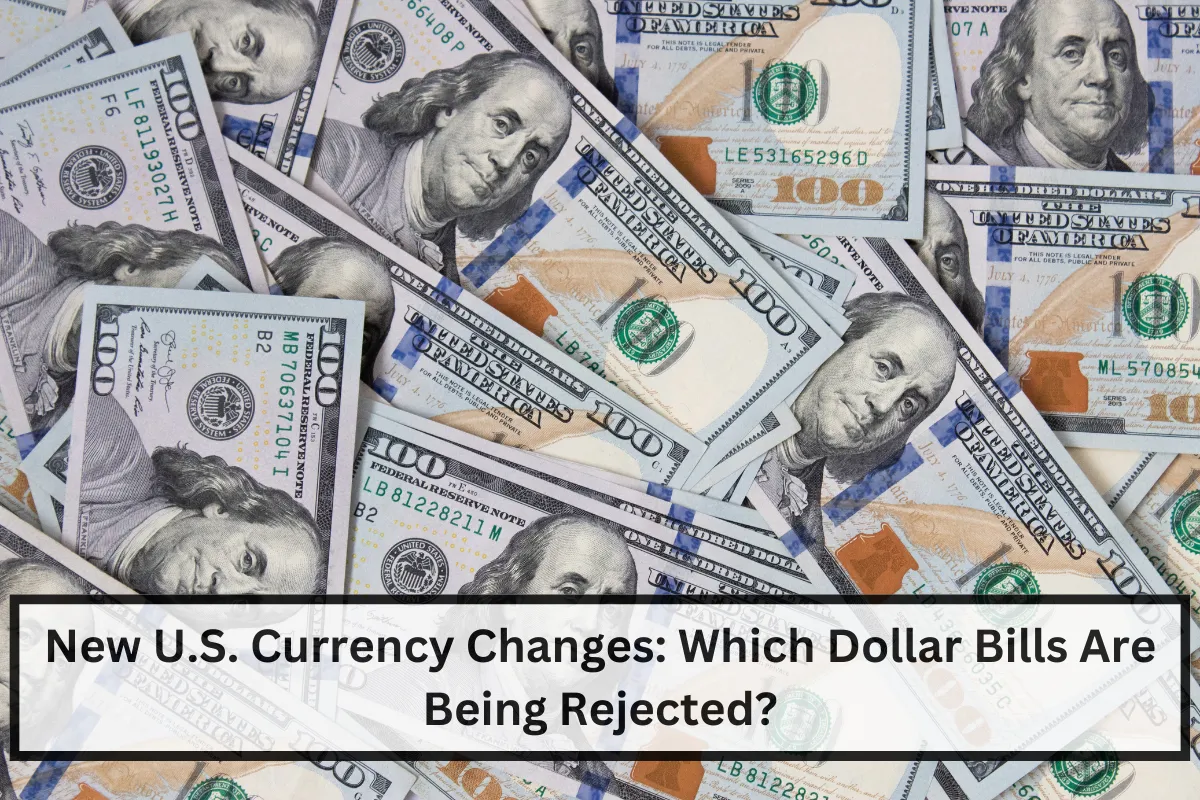In recent news, the U.S. government has made an important announcement about changes to the U.S. dollar bills. Starting in October 2024, some older bills will no longer be accepted in stores, banks, or ATMs.
This change is part of a bigger effort to make the U.S. currency safer and prevent counterfeiting. Let’s take a closer look at which bills are affected and why these changes are happening.
Which Dollar Bills Will Be Rejected?
As of October 2024, stores like Walmart, Target, and Dollar Tree will stop accepting certain types of damaged bills. These include:
- Mutilated bills: Bills with tears or missing parts.
- Faded or damaged bills: Bills that have been damaged by water or wear and tear.
These bills will no longer be accepted in stores, banks, or ATMs. However, don’t worry – the U.S. dollar will not disappear; it’s just that damaged bills will not be accepted anymore.
The Initiative Behind the Change
To make these changes, the U.S. government is working with various organizations, including the Bureau of Engraving, the Secret Service, and the Advanced Counterfeit Deterrence (ACD) Steering Committee.
The main goal is to make the financial system safer by improving the security of U.S. currency and preventing counterfeiting.
When Will New Bills Be Released?
- 2028: New design for the USD 50 bill.
- 2030: Updated USD 20 bill.
- 2032-2035: New USD 5 bill design.
- 2034-2038: New design for the USD 100 bill.
These new bills will replace older versions over time, which could change how the older bills are used in daily transactions.
Current Bills in Circulation
Right now, the U.S. Federal Reserve prints seven types of bills: USD 1, USD 2, USD 5, USD 10, USD 20, USD 50, and USD 100. Even though higher-value bills like the USD 500, USD 1,000, and USD 10,000 are no longer printed, they are still considered legal money and should be accepted everywhere.
How to Spot a Fake Dollar Bill
With the rise in counterfeit bills, it’s important to know how to spot a fake. Here are some key security features to look for:
- Security Thread: Hold the bill up to light to see a vertical thread with the word “USA” printed on it.
- 3D Security Ribbon: On larger bills, the bells on the blue ribbon change to show the number “100” when tilted.
- Color-Shifting Ink: On the USD 100 bill, the number in the bottom right corner changes color from copper to green.
- Watermark: A faint image of the portrait can be seen when the bill is held against the light.
- Microprinting: Tiny text, like “USA,” can be found around the bill.
- Raised Printing: The texture of the bill, especially on the portrait, should feel rough to the touch.
These features help to identify authentic bills and protect against counterfeit money.
In summary, the U.S. government is taking steps to make currency safer and prevent counterfeiting. Starting in October 2024, damaged bills will no longer be accepted, and new bill designs will be released in the coming years.
As a result, it’s important to understand how to spot fake bills and stay informed about the changes in currency.

